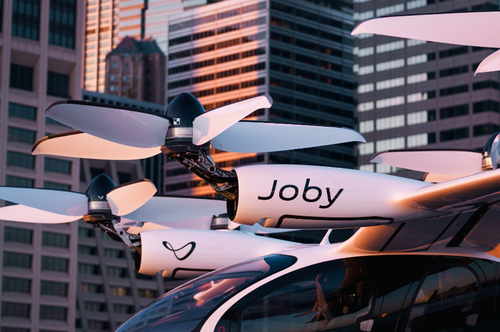Hey Pilots, FAA Issues Final Rule For “Powered-Lift” Rating, Paves Way For Air Taxis Over US Cities
The Federal Aviation Administration (FAA) introduced a new rule establishing a “powered-lift” aircraft category for pilot training, marking the first new category for pilot certification since helicopters were introduced in the 1940s. This new category paves the way for aircraft that take off and land vertically like helicopters but fly like fixed-wing planes, commonly known as electric vertical take-off and landing (eVTOL) aircraft, to fly in controlled airspace across America.
Here’s more from the FAA:
The agency today issued a final rule for the qualifications and training that instructors and pilots must have to fly aircraft in this “powered-lift” category, which have characteristics of both airplanes and helicopters. The rule also addresses their operational requirements, including minimum safe altitudes and required visibility. The rule is the final piece in the puzzle for safely introducing these aircraft in the near term.
On X, FAA Administrator Mike Whitaker wrote, “An extraordinary moment for aviation! Our rule for training and certificating pilots to fly powered lift is the final piece of the puzzle to get these revolutionary aircraft flying safely in our skies”
An extraordinary moment for aviation! Our rule for training and certificating pilots to fly powered lift is the final piece of the puzzle to get these revolutionary aircraft flying safely in our skies. https://t.co/96Q7TQZfkM pic.twitter.com/7RvSqbdGT8
— FAA Mike Whitaker (@FAA_Mike) October 22, 2024
According to the FAA’s powered-lift rule:
Makes changes to numerous existing regulations and establishes a Special Federal Aviation Regulation (SFAR) with new requirements to facilitate instructor and pilot certification and training.
Applies helicopter operating requirements to some phases of flight and adopts a performance-based approach to certain operating rules.
Allows pilots to train in powered-lift with a single set of flight controls; legacy rules require two flight controls – one for the student and one for the instructor.
“The regulation published today will ensure the U.S. continues to play a global leadership role in the development and adoption of clean flight,” JoeBen Bevirt, founder and CEO of air taxi company Joby Aviation, told Fast Company, adding, “Delivering the rules ahead of schedule is a testament to the dedication, coordination, and hard work of the rulemaking team.”
$JOBY eVTOL getting ready to fly in NYC on a chilly, clear Monday pic.twitter.com/rtruRX1epu
— Allen Root (@DowJonesAl) November 13, 2023
We have followed several eVTOL startups over the years, including Alef Aeronautics, a company backed by Space-X…
Forget Musk’s Tunnels, Early Tesla Investor Seeds First-Ever eVTOL Car
SpaceX-Backed Flying Car Startup Gets FAA Nod
It’s not hard to figure out that flying cars must be done under the FAA’s Visual Flight Rules (VRF) or Instrument Flight Rules (IFR). In other words, the pilot in control will need a pilot license and be rated in the powered lift category.
Tyler Durden
Wed, 10/23/2024 – 21:20




Share This Article
Choose Your Platform: Facebook Twitter Linkedin